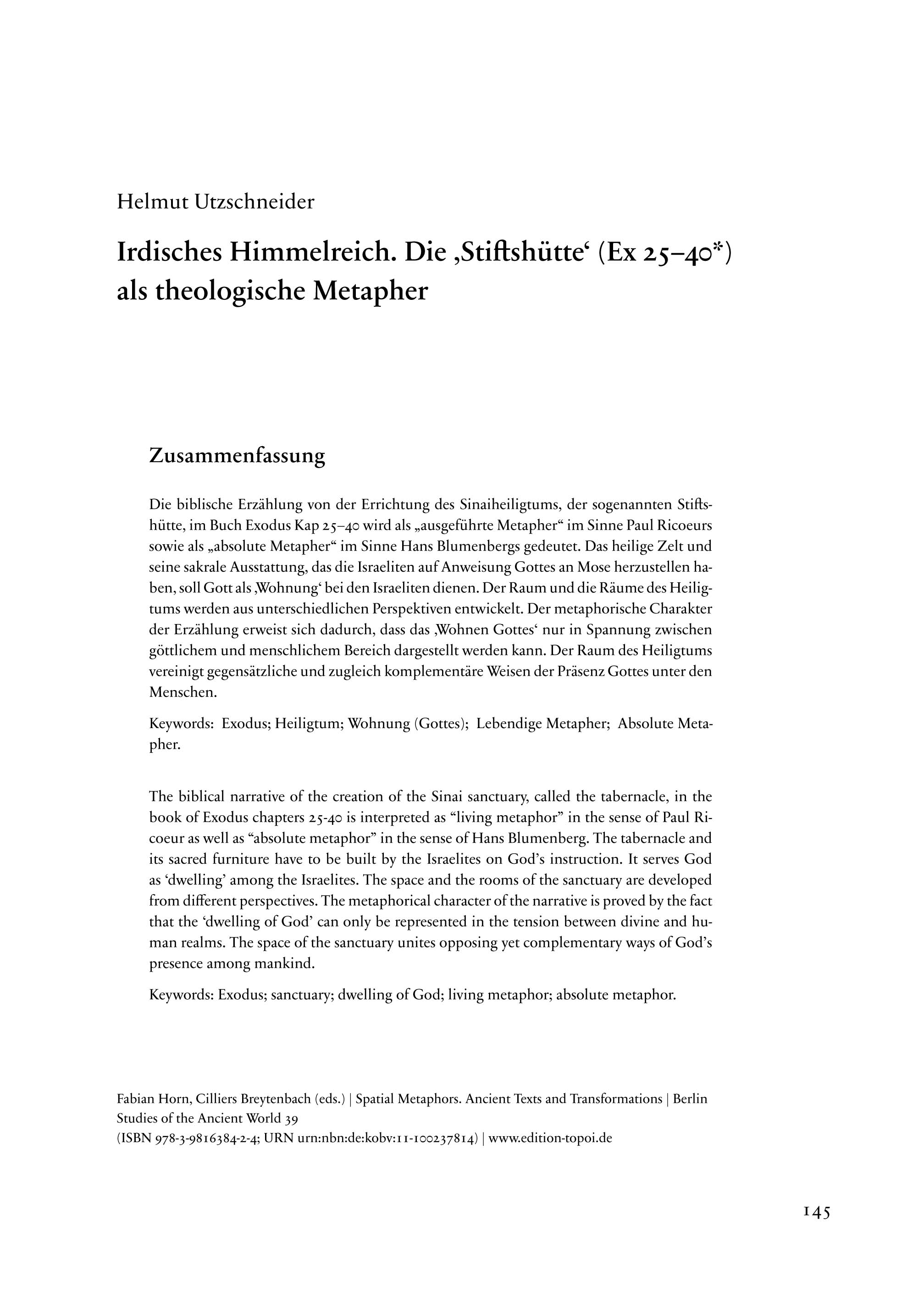Irdisches Himmelreich. Die ‚Stiftshütte‘ (Ex 25–40*) als theologische Metapher
The biblical narrative of the creation of the Sinai sanctuary, called the tabernacle, in the book of Exodus chapters 25-40 is interpreted as “living metaphor” in the sense of Paul Ricoeur as well as “absolute metaphor” in the sense of Hans Blumenberg. The tabernacle and its sacred furniture have to be built by the Israelites on God’s instruction. It serves God as ‘dwelling’ among the Israelites. The space and the rooms of the sanctuary are developed from different perspectives. The metaphorical character of the narrative is proved by the fact that the ‘dwelling of God’ can only be represented in the tension between divine and human realms. The space of the sanctuary unites opposing yet complementary ways of God’s presence among mankind.
Die biblische Erzählung von der Errichtung des Sinaiheiligtums, der sogenannten Stiftshütte, im Buch Exodus Kap 25–40 wird als „ausgeführte Metapher“ im Sinne Paul Ricoeurs sowie als „absolute Metapher“ im Sinne Hans Blumenbergs gedeutet. Das heilige Zelt und seine sakrale Ausstattung, das die Israeliten auf Anweisung Gottes an Mose herzustellen haben, soll Gott als ‚Wohnung‘ bei den Israeliten dienen. Der Raum und die Räume des Heiligtums werden aus unterschiedlichen Perspektiven entwickelt. Der metaphorische Charakter der Erzählung erweist sich dadurch, dass das ‚Wohnen Gottes‘ nur in Spannung zwischen göttlichem und menschlichem Bereich dargestellt werden kann. Der Raum des Heiligtums vereinigt gegensätzliche und zugleich komplementäre Weisen der Präsenz Gottes unter den Menschen.

